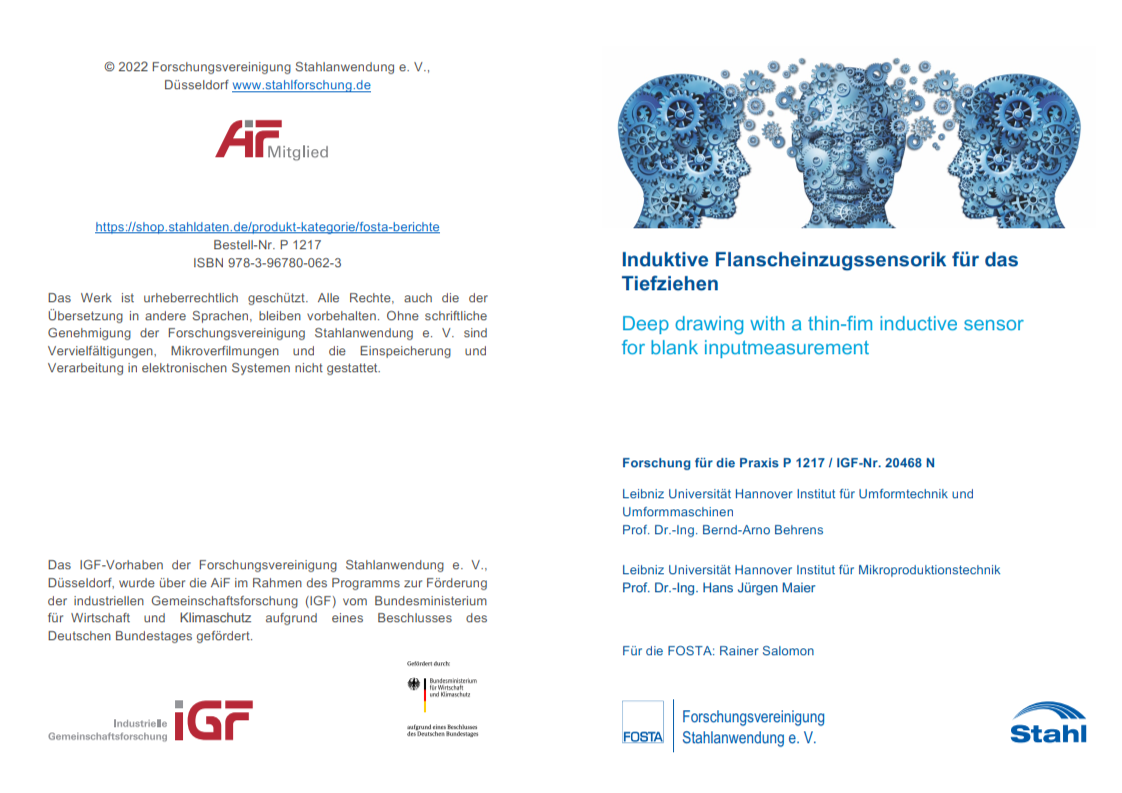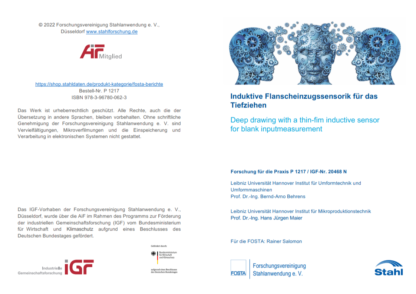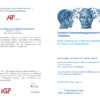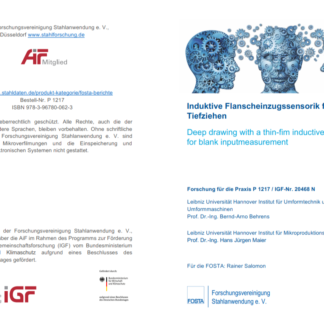Description
P 1217 – Deep drawing with a thin-fim inductive sensor for blank inputmeasurement
The quality of deep-drawn parts is affected by uncontrollable stochastic fluctuations, which occur despite extensive quality controls along the entire value chain. However, monitoring and controlling the draw-in of the transformed sheet material would allow for a significant increase in process robustness. This requires for sensor systems suitable for the industrial environment, which so far do not exist.
The project starts with an analysis of existing sensor systems for deep drawing based on various measurement methods. Building on those systems, an inductive sensor is designed which, due to its structure, is particularly robust against the loads acting in the process. With the parametric and transformational method two different measurement methods are tested, of which the latter is selected due to its higher temporal resolution. Next, the sensor concept is converted into a final design using numerical simulation. The sensor is then manufactured according to this design using priorly developed production processes. After the sensor has been installed in the tool, the main variables influencing the sensor signal are determined in the real deep-drawing process. Next, these parameters are analyzed quantitatively with the help of designed experiments. In this context, the mold temperature as well as the sheet material, the measuring frequency and the blankholder force were identified as relevant influencing variables. Inaccurate blank positioning turned out to be a significant disturbing factor. In final investigations, both tearing and wrinkling of various blank materials could be detected based on the recorded data of the inductive sensor.
Published in:
2022
Authors:
Prof. Dr.-Ing. B.-A. Behrens, Prof. Dr.-Ing. H. J. Maier




